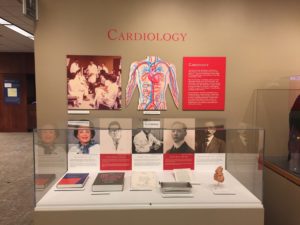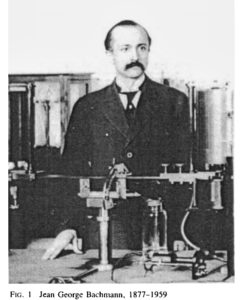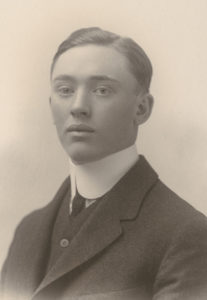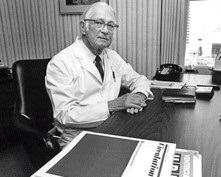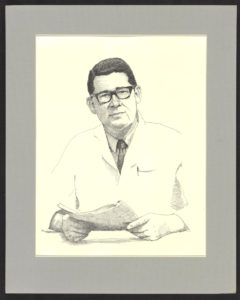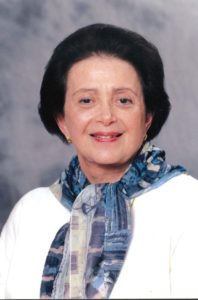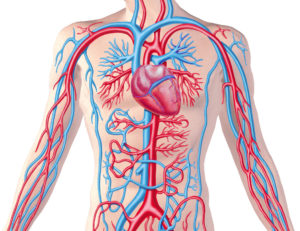Hello and welcome to a Virtual Walkthrough of the physical exhibit “History of Teaching Medicine at Emory University” located at the Woodruff Health Sciences Center Library. Due to Covid-19 we’re doing a virtual walk-through of our current exhibit. We’ll be looking at the exhibit case by case, continuing with Case 4 this week.
Origins of Teaching Medicine at Emory, Cardiology
As stated by noted cardiologist J. Willis Hurst, “we all stand on the shoulders of who came before us.” The roots of cardiology at Emory began with George Bachmann who served as the first chair of physiology in 1915. After advancements including the discovery of “Bachmann’s bundle in the atria of the heart” and Daniel Elkin’s work with patients with traumatic arteriovenous fistula, 1946 Emory marked an important chapter in its history of cardiology by hiring Bruce Logue who developed a comprehensive cardiology center at Emory. The recruitment of renowned cardiologists such as Bruce Logue, J. Willis Hurst, Nanette Wenger, Charles Hatcher, and Andreas Gruentzig led to steady advancement in Emory’s cardiology department. Led today by W. Robert Taylor, MD, the Emory Division of Cardiology is at the forefront of many exciting breakthroughs in the prevention and treatment of cardiovascular disease.
Back of Case Content
Jean George Bachmann (1877-1959)
Jean George Bachmann arrived Emory in 1910 and served as professor and Chairman of the Department of Physiology. In researching the heart’s conduction system he found that clamping the muscular bundle of fibers that connects the atria, now called “Bachmann’s bundle,” caused a significant conduction relay. Dr. Bachmann wrote many articles on the electrophysiology if the heart and his textbook “Experimental Physiology” was used for several years at Emory.
Daniel Elkin (1893-1958)
Daniel Elkin’s early career was highlighted by his diagnosis and treatment of cardiac trauma. While cardiac surgery was still in its early stages in the 1930s, Dr. Elkin’s article “Stab Wound of the Heart: Electrocardiographic Studies of Two Cases” details his successful suturing of the heart. Dr. Elkin’s innovative contributions to vascular and trauma surgery solidified Emory as a leading institution in surgical practice and research.
R. Bruce Logue (1911-2007)
The study of the heart hasn’t always been high tech. Bruce Logue, one of Georgia’s first cardiologists, was known to ask patients to run up a hill next to Emory Hospital in an attempt to reproduce chest pain. Technology would improve the practice, and from his days as a military cardiologist during World War II to a 23-year duration as chief of cardiology, Dr. Logue was a national leader in teaching, research, and patient care. Logue established the first cardiology fellowship program at both Emory and Grady hospitals and was founding president of the Georgia Heart Association.
J. Willis Hurst (1920-2011)
A cardiologist, professor of medicine, and writer, J. Willis Hurst authored 20 medical books and more than 150 articles in his career. He was editor-in-chief of The Heart, one of the primary textbooks in cardiology, now in its 13th edition and translated in six foreign languages. Chairman of the Department of Medicine for three decades, Dr. Hurst also served as physician-in-chief at Emory University Hospital, the Emory Clinic, and Grady Memorial Hospital, and is remembered as President Lyndon Johnson’s cardiologist from 1955-1973.
Nanette Wenger (1930-)
In a career that spans more than fifty years, Dr. Wenger’s steadfast dedication to reducing women’s disability and death from cardiovascular disease has made her one of the country’s most-respected experts on coronary heart disease in women. A native of New York City, Dr. Wenger received her medical and cardiology training at Mount Sinai Hospital before coming to Emory University School of Medicine and Grady Memorial Hospital in 1958. Since then, she has been a trailblazer in the field of cardiology, authoring or co-authoring more than 1,300 scientific and review articles and book chapters.
“One of every three women will develop heart disease and in particular coronary disease in her lifetime, so it’s important that we consider lifetime risks and not just short-term risks when we try to prevent coronary disease in women.” Dr. Nanette Wenger
Looking Closer : Select Items from Case 4
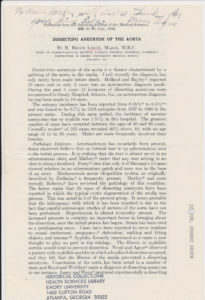
“Dissecting Aneurysm of the Aorta,” by R. Bruce Logue. From the American Journal of the Medical Sciences, 1943.
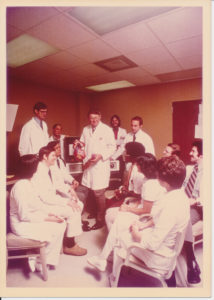
J. Willis Hurst speaking with medical house officers, circa 1980. J. Willis Hurst papers, WHSC Library.
Thank you for viewing our virtual tour!
Collections with materials in this exhibit:
J. Willis Hurst papers, 1951-2009
Health Sciences Center Library Artifact collection, 1832-2000
Health Sciences Center Library Biographical files, 1818-2018

